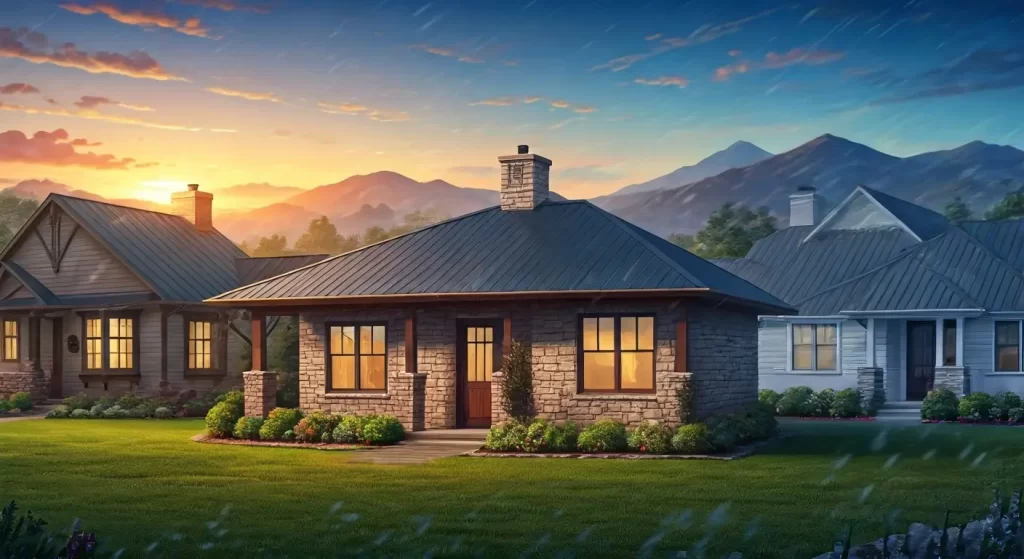Your roof is your home’s primary defense against weather conditions, and choosing the right metal roofing profile is crucial to ensuring its lasting durability. In climates with extremes—whether intense heat, moisture, or snow—your roofing materials need to perform exceptionally well. Metal roofing offers diverse options, making it one of the most adaptable systems for various weather patterns. As a San Antonio-based company with over 25 years of roofing expertise, Shield Roofing helps you make an informed decision tailored to your climate and preferences.
Understanding Metal Roofing Profiles
A well-chosen metal roof doesn’t just enhance curb appeal—it protects your home from environmental challenges. What makes metal roofing so effective is its adaptability to different climates and conditions. From heavy snow loads to intense UV radiation, there’s a type of metal roofing profile suitable for virtually every weather scenario.
Metal panels come in numerous profiles, each engineered for specific performance needs. Understanding these distinctions is key to maximizing your roof’s lifespan and energy efficiency. Let’s begin by breaking down what metal roofing profiles are and how their types differ.
What Is a Metal Roofing Profile?
A metal roofing profile defines the design and structure of the panels that make up your roof, influencing its performance against snow, wind, and rain. Some profiles excel at water resistance, while others support heavy snow loads.
An effective metal roofing system balances functionality with aesthetics, featuring patterns or seams that boost structural integrity and resist leaks, rust, and weather damage. Advanced designs like standing seam offer interlocking panels for a sleek look.
Additionally, roofing profiles affect maintenance; options like hidden fastener systems require minimal upkeep. Choosing the right profile ensures optimal performance tailored to your climate needs.
Common Types of Metal Roofing Profiles
Metal roofing profiles address various aesthetic preferences and practical needs. Popular options include standing seam systems with vertical panels for superior weather resistance and structural integrity. Exposed fastener panels are quicker to install but feature visible screws that may be less durable in harsh conditions.
Metal tile roofing mimics traditional tiles, offering curb appeal along with energy efficiency and low maintenance. Metal shake roofing provides a rustic look while ensuring excellent durability against extreme weather. Each profile is tailored to meet specific environmental challenges, helping homeowners select the best option for their location.
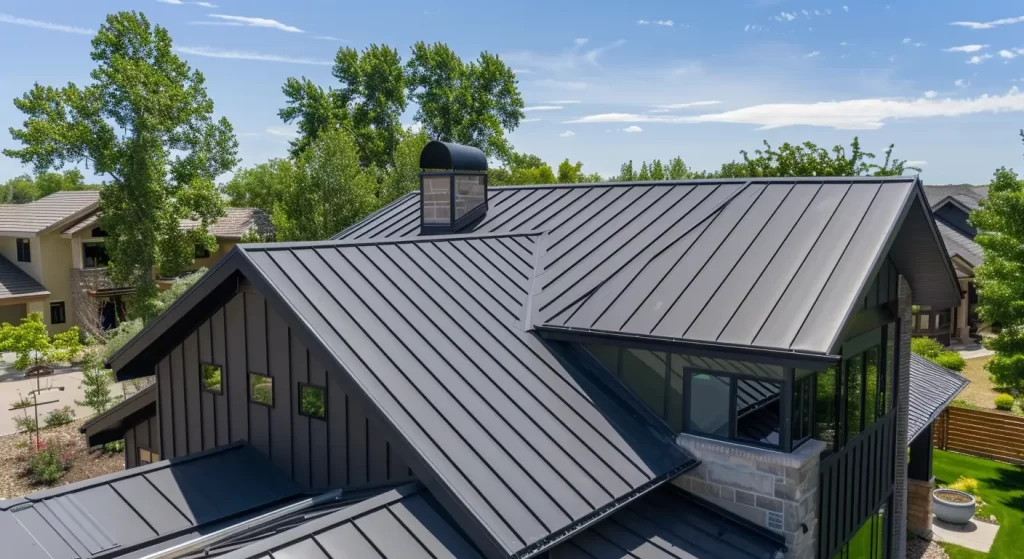
Why Climate Matters When Choosing a Metal Roof
When choosing a metal roof, consider your local weather, as it affects performance and longevity. Select a profile designed for specific stresses—like heat, snow, or moisture—to ensure durability and energy efficiency. Different materials perform better in various climates; for example, roofs meant for extreme heat may not suit humid areas. Understanding temperature fluctuations, humidity, and precipitation can guide your decision. Key factors include thermal expansion, corrosion resistance, and insulation properties. By evaluating these aspects and consulting a roofing professional, you can ensure your metal roof meets your climate’s demands.
The Impact of Temperature Extremes on Roofing
Temperature swings can drastically affect the resilience of roofing materials. High heat can warp some roofs, whereas freezing temperatures may cause materials to crack. Metal roofing materials, known for their durability, excel in handling extreme temperatures.
With superior solar reflectance, metal roofs reduce heat absorption, keeping your home cooler during scorching summers. Products like standing seam metal roofing offer even greater energy efficiency, minimizing thermal conductivity.
How Humidity and Precipitation Affect Metal Roofs
Humidity and heavy rainfall pose unique challenges to roofing systems. Metal roofs, particularly those with water-resistant paint systems, excel at repelling moisture and combating rust.
Profiles designed for high humidity, such as corrugated panels, help channel water effectively, minimizing the risk of leaks. Coastal areas benefit from materials like aluminum or galvalume, known for their rust resistance and ability to endure saline air.
For homeowners in rainy regions, these profiles offer peace of mind with minimal maintenance requirements. Advanced coatings further enhance their lifespan, providing long-lasting protection against moisture-induced deterioration.
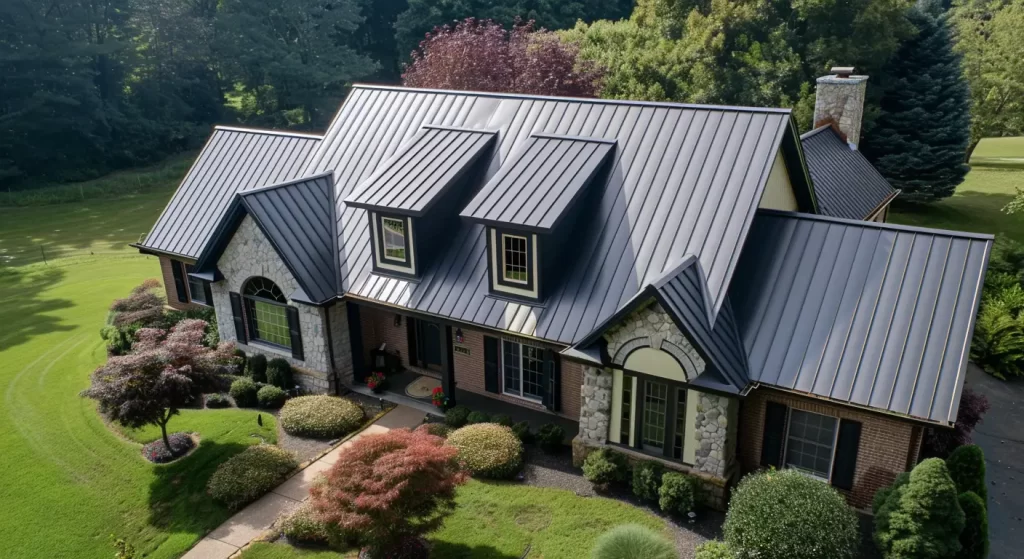
Profiles Best Suited for Hot and Sunny Climates
Living in a hot climate like San Antonio, TX requires careful selection of roofing materials. Metal roofing profiles designed for UV protection and cooling efficiency are essential. “Cool metal roofing” systems with reflective coatings effectively deflect heat, reducing indoor temperatures and lowering energy costs during scorching summers. Among the options, standing seam metal roofs excel in heat reflection, minimizing heat absorption to keep your home cooler. Cool-coated panels also protect against UV damage, ensuring roof longevity while maintaining a comfortable indoor environment.
Standing Seam Metal Roofs for Heat Reflection
Standing seam metal roofing is particularly well-suited for extreme heat. Its interlocked design prevents heat transfer to underlying layers, making it highly efficient in warm climates.
The sleek design reduces seams and leaves no room for heat-trapping materials to accumulate, ensuring better indoor comfort. Given San Antonio’s intense sun, standing seam roofs with reflective finishes help in maintaining cooler roof temperatures year-round.
Profiles Ideal for Humid or Coastal Areas
In humid regions or near coastlines, choosing the right metal roofing is crucial to combat corrosion and moisture damage. Rust poses a significant risk, making materials like aluminum and galvalume essential for their superior resistance. These materials effectively manage moisture, reducing maintenance for homeowners. The corrugated metal roof stands out for its durability against harsh weather. By selecting rust-resistant options, homeowners can enhance longevity and performance in humid or salty climates, protecting their properties from corrosion and moisture buildup.
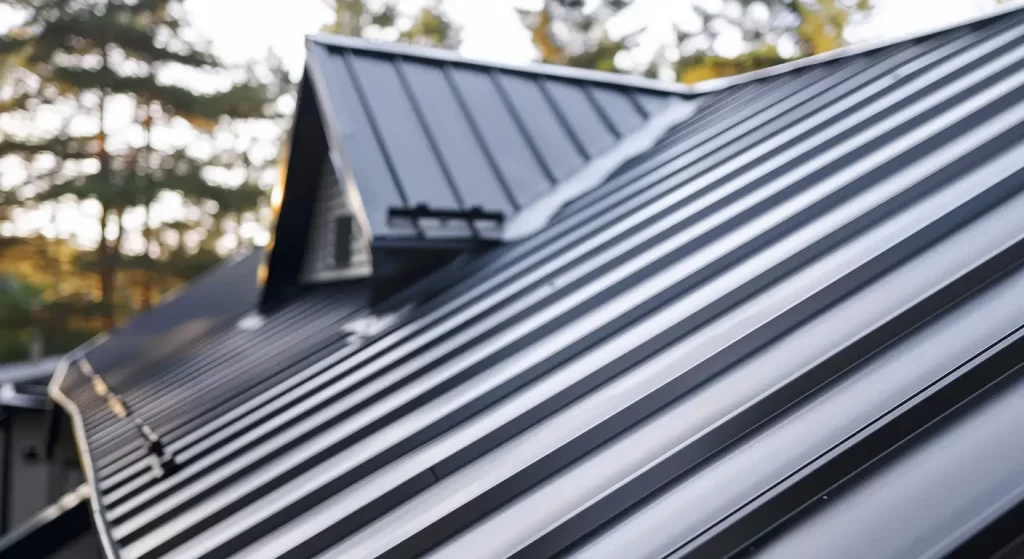
Corrugated Metal Roofing to Combat Moisture
Ideal for regions prone to heavy rainfall, corrugated metal roofing excels in its ability to combat moisture. The design features vertical channels that facilitate efficient water drainage, preventing damage from standing water and ensuring structural integrity. Its galvanized finish enhances corrosion resistance, which is critical for long-lasting performance in humid environments. Additionally, the low-maintenance nature of corrugated metal roofs ensures that property owners can focus on their peace of mind rather than constant upkeep. By choosing this roof, you’re investing in durability that withstands moisture-related challenges effectively.
Aluminum and Galvalume Options for Rust Resistance
Selecting aluminum and galvalume options offers effective rust resistance essential for ensuring the longevity of a roof. These materials are designed to withstand harsh environmental conditions, thanks to their inherent weather resistance and protective coatings. Aluminum’s lightweight nature combined with galvalume’s superior corrosion resistance makes them ideal for various climates, ensuring structural integrity and minimal maintenance over time. Investing in these types of metal roofing not only enhances the aesthetic appeal but also provides peace of mind against rust-related issues.
Profiles Designed for Cold and Snowy Climates
Selecting the right metal roofing profile for regions characterized by cold and snowy conditions is crucial for ensuring structural support and longevity. Steep-slope panels are particularly adept at snow shedding, effectively minimizing the risk of heavy snow accumulation that could compromise the roof’s integrity. Additionally, insulated metal roofs play a significant role in preventing ice dams, which can lead to moisture issues and roofing damage. By prioritizing these specific profiles, homeowners can achieve optimal energy efficiency and peace of mind during harsh winter months.
Insulated Metal Roofs to Prevent Ice Dams
Insulated roofs provide an effective solution for preventing ice dams, which can lead to costly damage and reduced energy efficiency. By incorporating a robust insulation layer, these roofing systems facilitate proper temperature regulation, minimizing the risk of snow melting and refreezing at the eaves. Additionally, this type of metal roofing enhances structural integrity and durability, ensuring that the system withstands the test of time under various weather conditions. With superior energy efficiency and minimal maintenance requirements, insulated metal roofs present a wise investment for homeowners seeking peace of mind.
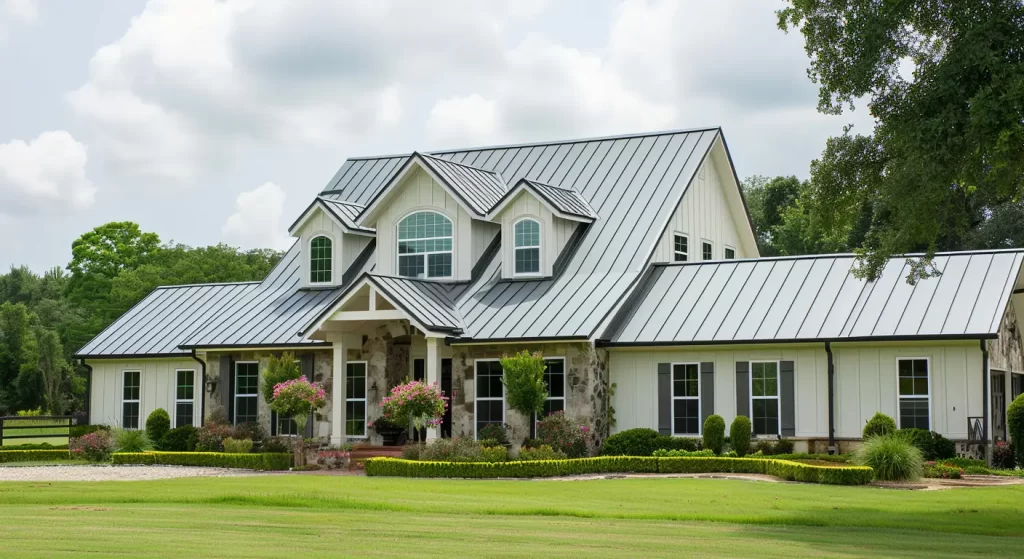
Profiles for High Wind and Storm-Prone Regions
Selecting the right roofing profile for areas susceptible to high winds and storms is crucial for ensuring structural integrity and longevity. Interlocking panels are particularly effective, providing superior wind resistance through their design that minimizes vulnerability to uplift forces. Additionally, impact-resistant metal shingles offer added reassurance during severe weather conditions. These advanced roofing materials not only safeguard your home but also contribute to overall energy efficiency. With the right combination of profiles, homeowners can achieve peace of mind, knowing their roofing system is built to withstand even the toughest elements.
Impact-Resistant Metal Shingles for Hail Protection
Metal shingles designed for impact resistance provide an excellent option for homeowners facing severe weather conditions. These roofing materials feature a robust structure that can withstand hail damage, ensuring both durability and aesthetic appeal. The innovative design of impact-resistant metal shingles efficiently absorbs shocks, mitigating the risk of dents and cracks often associated with hailstorms. Additionally, their superior energy efficiency helps regulate indoor temperatures, providing peace of mind during extreme weather events. Choosing these shingles not only enhances curb appeal but also adds significant value to your property.
Comparing Metal Roofing Profiles for Durability and Longevity
Evaluating metal roofing profiles involves considering their ability to endure various weather conditions over the years. For example, standing seam roofs exhibit excellent durability, thanks to their hidden fastener systems that protect against water intrusion. Metal shake and metal tile roofing also showcase significant longevity, often resistant to heavy snow loads and high winds. Understanding the lifespan and maintenance needs of different metal roofing materials, including paint systems and structural integrity, ensures an informed decision that aligns with both aesthetic appeal and practicality, offering peace of mind for homeowners.
Lifespan of Different Metal Roofing Options
Various metal roofing materials offer impressive lifespans, ensuring they stand the test of time under diverse weather conditions. For instance, galvanized steel roofs can last 40 to 70 years, while aluminum options typically range from 30 to 50 years. Standing seam metal roofing systems, known for their superior durability, can even exceed 50 years with proper maintenance. Materials such as copper roofs may reach impressive lifespans of over 100 years, providing exceptional long-term value. Investing in high-quality metal roofing ensures peace of mind regarding longevity and performance.
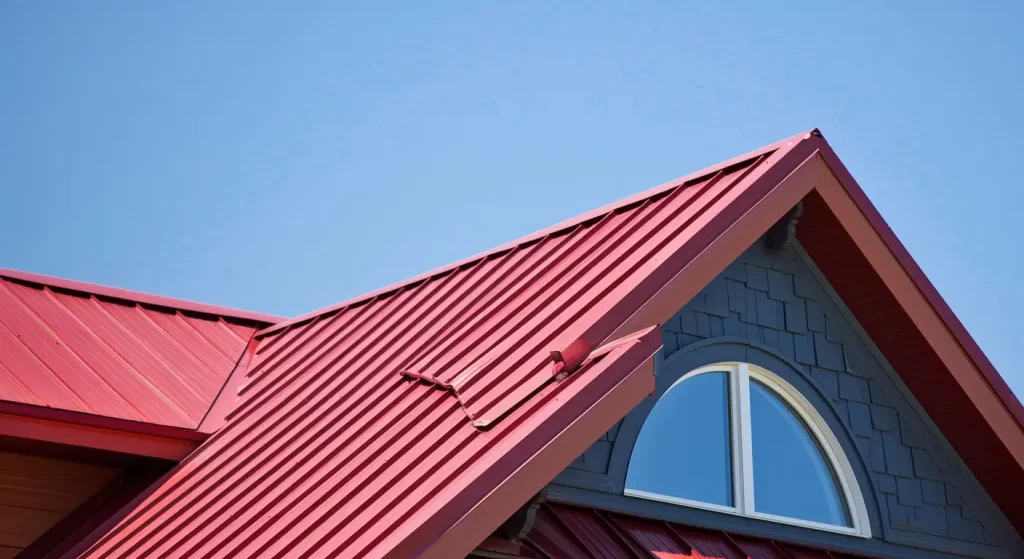
Choosing the Right Brand and Contractor in San Antonio, TX
Owens Corning and GAF lead in roofing innovation, delivering exceptional quality and durability. With over 25 years of experience, we are proud to be an Owens Corning preferred contractor, GAF certified, and hold a BBB A+ rating along with CTRCA and Directorii certifications. Their advanced products ensure energy efficiency and weather resistance for metal roofing in various climates. Partnering with these reputable brands offers property owners superior warranties and lasting performance. Our mission is clear: durable roofs! Trust a professional contractor knowledgeable in Owens Corning and GAF to ensure compliance with local building codes while achieving aesthetic appeal and structural integrity.
What’s Next
The right choice in metal roofing profiles is paramount for ensuring longevity and performance. By considering local weather conditions, such as heavy rain or snow loads, homeowners can make informed decisions that enhance energy efficiency and curb appeal. Partnering with a trusted contractor who specializes in metal roofing not only guarantees proper installation but also provides peace of mind. Selecting a profile that meets durability standards and local building codes ensures optimal protection against extreme weather, fostering a lasting investment in your property.
Read our blog: Ice Dams: Prevention, Signs, and Safe Removal
Frequently Asked Questions
Are metal roofs noisy during rain or hail storms?
Metal roofs are often thought to be noisier during rain or hail than traditional roofing, but their design includes features that dampen noise. Factors like insulation, roof pitch, and metal type all help reduce sound transmission. Proper installation is also key to minimizing noise disturbances. When installed correctly, metal roofs offer durability, longevity, and effective noise reduction.
How do I maintain my metal roof for maximum lifespan?
To maintain your metal roof and ensure its maximum lifespan, regularly inspect for debris, clean gutters, and remove any rust or corrosion promptly. Additionally, reseal joints and fasteners as needed, and consider professional maintenance once a year to address any potential issues effectively.
